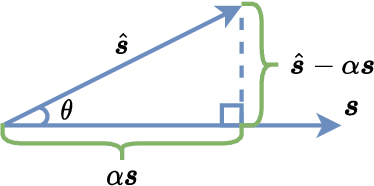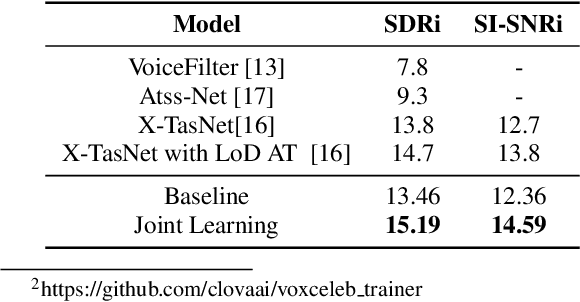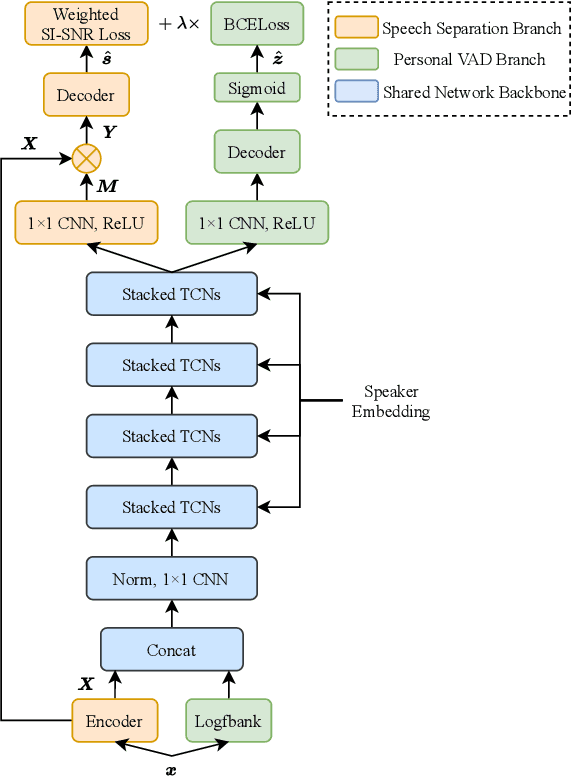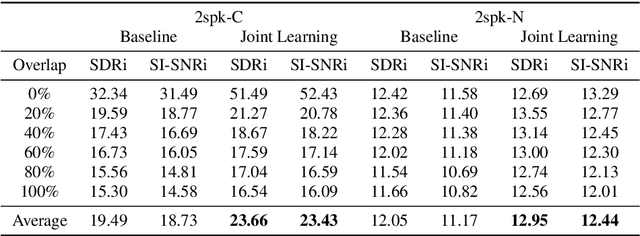Chen Jia
Bootstrapping LLMs via Preference-Based Policy Optimization
Nov 17, 2025Abstract:Bootstrapping large language models (LLMs) through preference-based policy optimization offers a promising direction for aligning model behavior with human preferences without relying on extensive manual annotations. In this work, we propose a novel preference-based policy optimization (PbPO) framework that formulates the learning process as a min-max game between the main policy and a reward model (RM). The RM is constrained within a confidence set derived from preference data to ensure reliable exploitation. Our iterative online algorithm actively collects preference data through guided exploration of the evolving policy, enabling continual self-improvement of both the policy and the RM. We provide theoretical guarantees for our method, establishing high-probability regret bounds for both settings with sequence-level RM and token-level RM, demonstrating its effectiveness in bootstrapping LLMs. Extensive experiments on five benchmarks show that our approach consistently outperforms existing state-of-the-art preference optimization techniques.
LIDAR: Lightweight Adaptive Cue-Aware Fusion Vision Mamba for Multimodal Segmentation of Structural Cracks
Jul 30, 2025Abstract:Achieving pixel-level segmentation with low computational cost using multimodal data remains a key challenge in crack segmentation tasks. Existing methods lack the capability for adaptive perception and efficient interactive fusion of cross-modal features. To address these challenges, we propose a Lightweight Adaptive Cue-Aware Vision Mamba network (LIDAR), which efficiently perceives and integrates morphological and textural cues from different modalities under multimodal crack scenarios, generating clear pixel-level crack segmentation maps. Specifically, LIDAR is composed of a Lightweight Adaptive Cue-Aware Visual State Space module (LacaVSS) and a Lightweight Dual Domain Dynamic Collaborative Fusion module (LD3CF). LacaVSS adaptively models crack cues through the proposed mask-guided Efficient Dynamic Guided Scanning Strategy (EDG-SS), while LD3CF leverages an Adaptive Frequency Domain Perceptron (AFDP) and a dual-pooling fusion strategy to effectively capture spatial and frequency-domain cues across modalities. Moreover, we design a Lightweight Dynamically Modulated Multi-Kernel convolution (LDMK) to perceive complex morphological structures with minimal computational overhead, replacing most convolutional operations in LIDAR. Experiments on three datasets demonstrate that our method outperforms other state-of-the-art (SOTA) methods. On the light-field depth dataset, our method achieves 0.8204 in F1 and 0.8465 in mIoU with only 5.35M parameters. Code and datasets are available at https://github.com/Karl1109/LIDAR-Mamba.
Online Knowledge Distillation with Reward Guidance
May 25, 2025Abstract:This work studies knowledge distillation (KD) for large language models (LLMs) through preference optimization. We propose a reward-guided imitation learning framework for sequential KD, formulating a min-max optimization problem between the policy and reward model (RM) to minimize the performance gap between the student and teacher policies. Specifically, the reward optimization is constrained to achieve near-optimality within a confidence set for preference alignment. For preference data construction, we explore both offline and online preference-based KD. Additionally, we reformulate the RM using the $Q$-value function and extend the framework to white-box KD, where the teacher policy's predicted probabilities are accessible. Theoretical analysis and empirical results demonstrate the effectiveness of the proposed framework.
SCSegamba: Lightweight Structure-Aware Vision Mamba for Crack Segmentation in Structures
Mar 03, 2025Abstract:Pixel-level segmentation of structural cracks across various scenarios remains a considerable challenge. Current methods encounter challenges in effectively modeling crack morphology and texture, facing challenges in balancing segmentation quality with low computational resource usage. To overcome these limitations, we propose a lightweight Structure-Aware Vision Mamba Network (SCSegamba), capable of generating high-quality pixel-level segmentation maps by leveraging both the morphological information and texture cues of crack pixels with minimal computational cost. Specifically, we developed a Structure-Aware Visual State Space module (SAVSS), which incorporates a lightweight Gated Bottleneck Convolution (GBC) and a Structure-Aware Scanning Strategy (SASS). The key insight of GBC lies in its effectiveness in modeling the morphological information of cracks, while the SASS enhances the perception of crack topology and texture by strengthening the continuity of semantic information between crack pixels. Experiments on crack benchmark datasets demonstrate that our method outperforms other state-of-the-art (SOTA) methods, achieving the highest performance with only 2.8M parameters. On the multi-scenario dataset, our method reached 0.8390 in F1 score and 0.8479 in mIoU. The code is available at https://github.com/Karl1109/SCSegamba.
RELexED: Retrieval-Enhanced Legal Summarization with Exemplar Diversity
Jan 23, 2025

Abstract:This paper addresses the task of legal summarization, which involves distilling complex legal documents into concise, coherent summaries. Current approaches often struggle with content theme deviation and inconsistent writing styles due to their reliance solely on source documents. We propose RELexED, a retrieval-augmented framework that utilizes exemplar summaries along with the source document to guide the model. RELexED employs a two-stage exemplar selection strategy, leveraging a determinantal point process to balance the trade-off between similarity of exemplars to the query and diversity among exemplars, with scores computed via influence functions. Experimental results on two legal summarization datasets demonstrate that RELexED significantly outperforms models that do not utilize exemplars and those that rely solely on similarity-based exemplar selection.
Staircase Cascaded Fusion of Lightweight Local Pattern Recognition and Long-Range Dependencies for Structural Crack Segmentation
Aug 23, 2024



Abstract:Detecting cracks with pixel-level precision for key structures is a significant challenge, as existing methods struggle to effectively integrate local textures and pixel dependencies of cracks. Furthermore, these methods often possess numerous parameters and substantial computational requirements, complicating deployment on edge devices. In this paper, we propose a staircase cascaded fusion crack segmentation network (CrackSCF) that generates high-quality crack segmentation maps using minimal computational resources. We constructed a staircase cascaded fusion module that effectively captures local patterns of cracks and long-range dependencies of pixels, and it can suppress background noise well. To reduce the computational resources required by the model, we introduced a lightweight convolution block, which replaces all convolution operations in the network, significantly reducing the required computation and parameters without affecting the network's performance. To evaluate our method, we created a challenging benchmark dataset called TUT and conducted experiments on this dataset and five other public datasets. The experimental results indicate that our method offers significant advantages over existing methods, especially in handling background noise interference and detailed crack segmentation. The F1 and mIoU scores on the TUT dataset are 0.8382 and 0.8473, respectively, achieving state-of-the-art (SOTA) performance while requiring the least computational resources. The code and dataset is available at https://github.com/Karl1109/CrackSCF.
Adversarial Moment-Matching Distillation of Large Language Models
Jun 05, 2024Abstract:Knowledge distillation (KD) has been shown to be highly effective in guiding a student model with a larger teacher model and achieving practical benefits in improving the computational and memory efficiency for large language models (LLMs). State-of-the-art KD methods for LLMs mostly rely on minimizing explicit distribution distance between teacher and student probability predictions. Instead of optimizing these mandatory behaviour cloning objectives, we explore an imitation learning strategy for KD of LLMs. In particular, we minimize the imitation gap by matching the action-value moments of the teacher's behavior from both on- and off-policy perspectives. To achieve this action-value moment-matching goal, we propose an adversarial training algorithm to jointly estimate the moment-matching distance and optimize the student policy to minimize it. Results from both task-agnostic instruction-following experiments and task-specific experiments demonstrate the effectiveness of our method and achieve new state-of-the-art performance.
Gender Bias in Large Language Models across Multiple Languages
Mar 01, 2024



Abstract:With the growing deployment of large language models (LLMs) across various applications, assessing the influence of gender biases embedded in LLMs becomes crucial. The topic of gender bias within the realm of natural language processing (NLP) has gained considerable focus, particularly in the context of English. Nonetheless, the investigation of gender bias in languages other than English is still relatively under-explored and insufficiently analyzed. In this work, We examine gender bias in LLMs-generated outputs for different languages. We use three measurements: 1) gender bias in selecting descriptive words given the gender-related context. 2) gender bias in selecting gender-related pronouns (she/he) given the descriptive words. 3) gender bias in the topics of LLM-generated dialogues. We investigate the outputs of the GPT series of LLMs in various languages using our three measurement methods. Our findings revealed significant gender biases across all the languages we examined.
Generalizing Reward Modeling for Out-of-Distribution Preference Learning
Feb 22, 2024Abstract:Preference learning (PL) with large language models (LLMs) aims to align the LLMs' generations with human preferences. Previous work on reinforcement learning from human feedback (RLHF) has demonstrated promising results in in-distribution PL. However, due to the difficulty of obtaining human feedback, discretely training reward models for every encountered distribution is challenging. Thus, out-of-distribution (OOD) PL is practically useful for enhancing the generalization ability of LLMs with limited preference feedback. This work addresses OOD PL by optimizing a general reward model through a meta-learning approach. During meta-training, a bilevel optimization algorithm is utilized to learn a reward model capable of guiding policy learning to align with human preferences across various distributions. When encountering a test distribution, the meta-test procedure conducts regularized policy optimization using the learned reward model for PL. We theoretically demonstrate the convergence rate of the bilevel optimization algorithm under reasonable assumptions. Additionally, we conduct experiments on two text generation tasks across 20 held-out domains and outperform a variety of strong baselines across various evaluation metrics.
Sparsely Overlapped Speech Training in the Time Domain: Joint Learning of Target Speech Separation and Personal VAD Benefits
Jun 28, 2021



Abstract:Target speech separation is the process of filtering a certain speaker's voice out of speech mixtures according to the additional speaker identity information provided. Recent works have made considerable improvement by processing signals in the time domain directly. The majority of them take fully overlapped speech mixtures for training. However, since most real-life conversations occur randomly and are sparsely overlapped, we argue that training with different overlap ratio data benefits. To do so, an unavoidable problem is that the popularly used SI-SNR loss has no definition for silent sources. This paper proposes the weighted SI-SNR loss, together with the joint learning of target speech separation and personal VAD. The weighted SI-SNR loss imposes a weight factor that is proportional to the target speaker's duration and returns zero when the target speaker is absent. Meanwhile, the personal VAD generates masks and sets non-target speech to silence. Experiments show that our proposed method outperforms the baseline by 1.73 dB in terms of SDR on fully overlapped speech, as well as by 4.17 dB and 0.9 dB on sparsely overlapped speech of clean and noisy conditions. Besides, with slight degradation in performance, our model could reduce the time costs in inference.
 Add to Chrome
Add to Chrome Add to Firefox
Add to Firefox Add to Edge
Add to Edge